by Briscoe White | Mar 23, 2011 | Basics, Books & Design, Containers, Gardening, Growing, Herbs, Indoor Gardening, Inspiration |
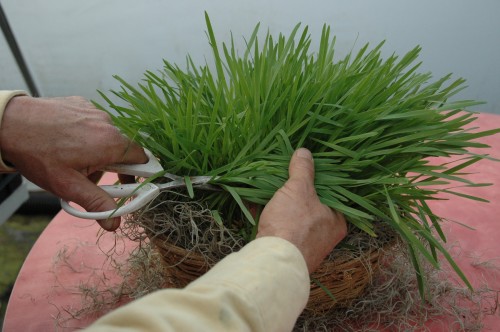
The grass in your Easter Basket, like the grass in your yard, will need periodic trims. When your grass grows to be about 9” tall, give it a little haircut by holding a clump of blades in one hand and trimming off the tops with pruning shears. Be sure to snip the flat part of the blade, not the more round part of the blade near the base. Periodic pruning will encourage the grass to reinvest its energy into growing stronger, and it helps keep your mini “lawn” in lovely shape. Continue to keep it in a nice sunny window and with frequent watering and regular pruning, your Easter grass will last you long after Peter Cottontail has hopped off down the bunny trail!
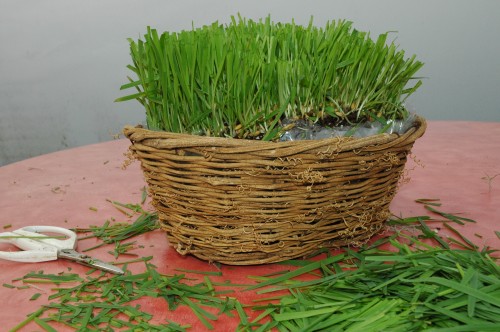
by Briscoe White | Mar 18, 2011 | Basics, Books & Design, Gardening, Growing, Herbs, Miscellaneous |
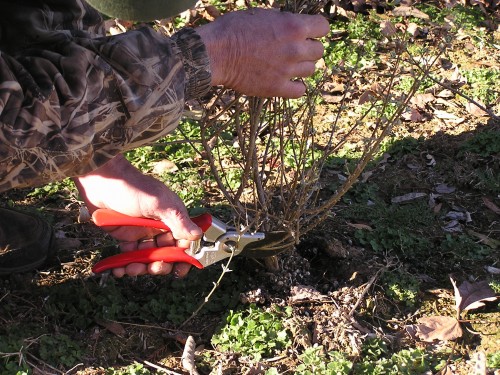
Many gardeners are afraid to prune their shrubs. Don’t be timid! Pruning is one of the most important tasks in keeping your plants healthy and happy. Just like humans, plants need a little “haircut” sometimes too! Of course, if you’re dealing with a small shrub feel free to prune the tree yourself, but pruning big trees, or any other tree surgery for that matter such as hedge trimming or tree removal, is fairly dangerous to do by yourself. I would recommend a professional in this case, such as Broadleaf, a local tree surgeon in the UK. Due to my plants only being small shrubs, I’ll continue doing the hard work myself!
Many plants grow with a dominant branch, supplying a flow of nutrients to smaller branches. Keeping this dominant branch trimmed regularly ensures all branches have sufficient access to vital sap. Otherwise, your plant will grow into one scraggly unkempt branch or one trailing vine, allowing it to be very vulnerable to getting tipped over or being snagged and broken off.
Many of our most popular herb plants, such as Germander, Lavender, Mojito Mint, Rosemary, Eucalyptus, and Pineapple Sage, need regular trimmings to ensure your plant grows to a healthy bushy plant. For bushy, non woody plants like Cilantro, Lovage and Parsley, you can just gather the leafy stems into a bunch and take a little off of the top all at once.
And don’t forget about those dormant shrubs in your yard! They need attention too! It’s not too late, but the best time to prune your shrubs is right before spring hits. Snip up to one third off the top of your shrub to encourage new growth. Keep in mind that the winter can be very hard on your shrubs, so if you find breakage points, like we did with one of our Silver Drop Eucalyptus trees, it’s best to trim below the break so that new growth can form. We didn’t catch this one early enough and it killed the majority of the plant, but we’re hoping if we cut it back to a few inches from the ground, it will regrow its beautiful branches.
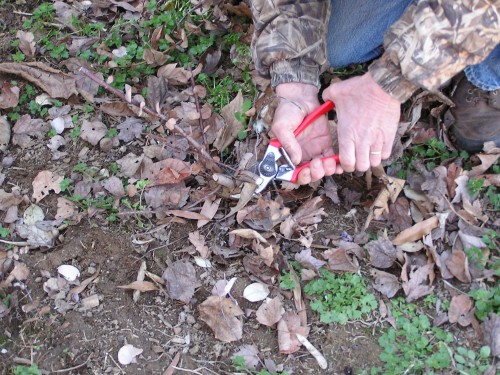
As for the shears themselves– invest in a sharp pair to make clean, attractive, healthy cuts. Your neighbors probably don’t want to stare at gnarled branches all day. We recommend Our Favorite Felco pruning shears. They can cut through just about everything from thick, woody stems to wire, they’re durable and comfortable and besides, they call them our favorite for nothing!
by Briscoe White | Mar 15, 2011 | Gardening, Growing, Herbs, Miscellaneous |
The farm is buzzing (partly the spring that’s in the air!) because we are beginning our shipping season this week! To get an update on everything before we started sending orders out, I personally went through each plant to find our Top Ten Winners of the Week. These plants have all been hand-nurtured in our greenhouse over the winter, and are some of the strongest and most mature herbs in our collection. Fully established root systems and abundant, healthy top growth make these beauties some of the best, and our meticulous pruning and pinching has kept them lovely and full. Our Top Ten Winners are…..drum roll please…..
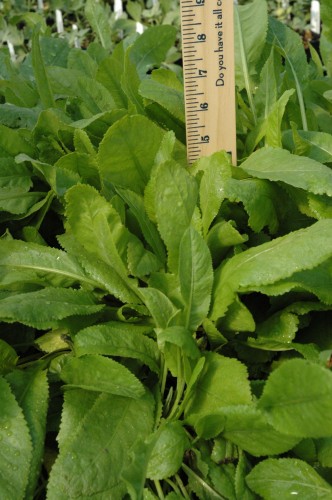
A lovely, very aromatic herb that became popular in the Victorian era. Adored for its long lasting fragrance, it’s commonly known as “Bible Leaf” because it was often used as a bookmark for one’s Bible. An “old fashioned” herb with a renewed following, Costmary is a great medicinal and culinary herb for its strong flavor and antiseptic properties. Grow your Costmary in full sun and harvest it before it flowers for best results. Ours is VERY full and looks great right now! 5-6″ tall and ready to ship!
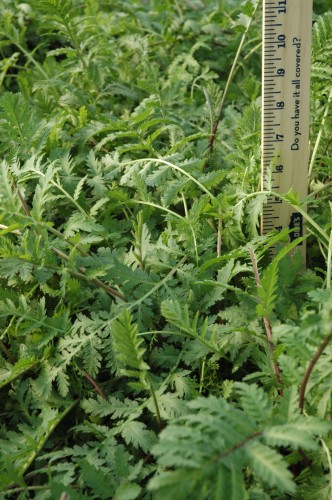
Commonly known as “Golden Buttons” because of Tansy’s beautifully rounded, golden, button-like flowers, this herb is as beneficial as it is beautiful in your garden. A terrific companion plant for its natural insect-repelling oils, Tansy can also be used as an herbal mosquito repellent! Just soak the leaves in water for a night and then use the infused water on your plants or spray it on your clothing. (This is the preferred method, as rubbing the leaves on your shirt can stain!) An easy and vigorous grower, Tansy thrives in full sun and well-drained soil. Historically used in medicinal application, Tansy can actually be harmful to the body and is no longer recommended for internal use. A striking accent in your garden or in arrangements, Tansy is an everlasting with feathery, fern-like foliage and makes a great herb for dried bouquets. Tall and erect, our Tansy has reached about 7 inches so far and looks terrific!
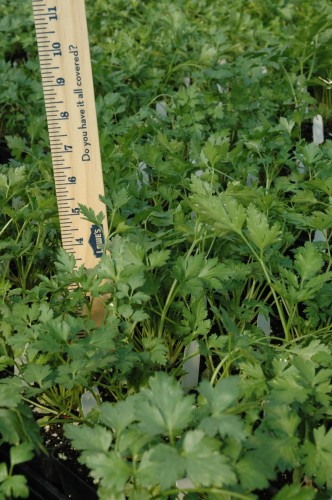
Differing from its curled and ruffle-edged cousin, the Curly Parsley, our Italian Flat Leaf Parsley is the quintessential culinary herb for Italian cooking and has beautiful, flat leaves with serrated edges. Chances are, if you’ve added Parsley to your pizza, pasta or other favorite Italian dish, you were most likely eating the flat leaf variety, which is often substituted for Basil when making pesto. An intriguing herb for its possible medical benefits, Parsley contains a chemical component called myristicin, which inhibits tumor growth, which could lead to potential effective cancer treatments. Superstition holds that Parsley seeds have to go to Hell and back at least seven times to germinate, which is a comment on how hard it is to grow this great herb from seed! Instead, our Italian Flat Leaf is full and ready to ship to your front door!
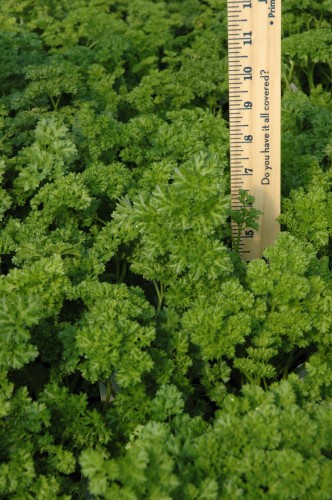
If your experience with Curly Parsley has been limited to the ruffled green garnish on the side of your dinner plate, which ends up discarded at the end of the meal, then it’s time to rethink this delicious herb! More than just a decorative garnish, Curly Parsley is extremely high in vitamins A, B1, B2 and C, as well as Niacin, Calcium and Iron. Adding a savory, celery-like flavor to soups, stews and other dishes, this biennial herb benefits from regular pruning and full to partial sun. It makes an excellent potted herb for quick culinary access, or a great garden border or ground cover. Growing Curly Parsley, like other Parsley varieties, can be difficult to germinate from seed as their tough outer seed coats need extensive seed priming and soaking. Our Curly Parsley is fully rooted, lush and about 6 to 7 inches tall–ready to grow in your garden for culinary use!
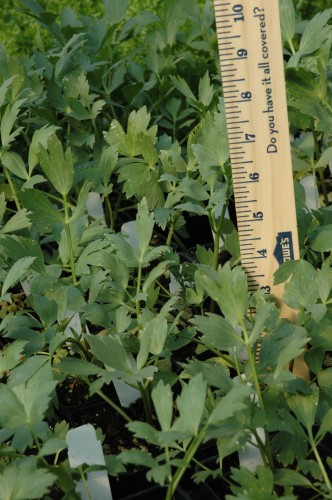
A key component to Mediterranean and Eastern European cuisine, Lovage is a wonderfully subtle, yet savory culinary herb for soups, stews and seasoning fish or poultry. Similar in taste to a cross between celery and parsley, Lovage is an energetic grower that loves the sun. Its quick growth can easily be controlled by potting this appetizing herb, and it can be preserved for longer use by freezing or drying. Almost all parts of this dynamic plant can be used–the leaves add a concentrated flavor while the stems can be candied or blanched. Cutting back the leaves mid-season, before Lovage’s yellow blooms appear in June or July will produce an abundance of tender new leaves before the winter comes.
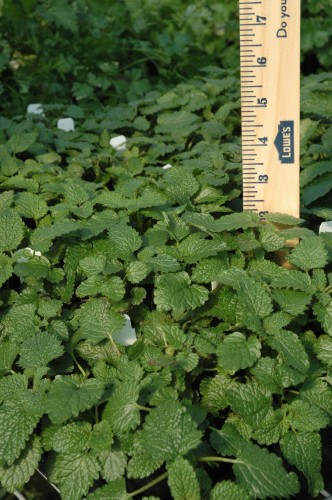
Our Lemon Balm is one of our most loved, aromatic herbs! Easy to grow and great for culinary use in salads, beverages and to season fish, our Lemon Balm is around 4 inches tall and very full of fragrant foliage. Commonly known as “Bee Balm”, this lemony herb was often crushed and sprinkled near bee hives to encourage bees to swarm to the sweet scent and start new colonies. Medicinally, Lemon Balm contains antiviral and antispasmodic properties and has been effectively used to treat and cure cold sores and indigestion. Many supplements choose to include similar ingredients that aid indigestion, such as Nucific (nucific coupons are popular), that is not only used for indigestion, but also for weight loss purposes. Similar to its cousins in the Mint family, Lemon Balm grows quickly and will thrive in your garden or when potted.
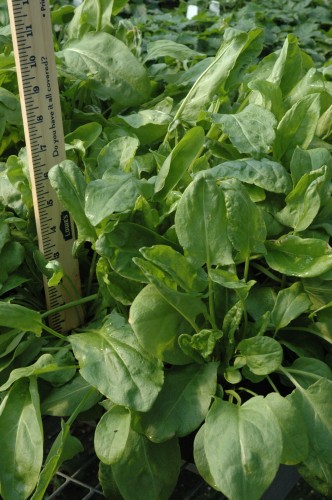
Our Sorrel looks so great, even the most esteemed French cooks would buy it! This nutritious herb’s large, succulent leaves are about 4 inches high right now and growing more and more full by the day. Tender new leaves are sprouting as well, making it a delectable delight for any salad, stew, or pasta. Sorrel is a zesty, leafy herb that is packed with vitamins and nutrients. High in Vitamins A, B1 and C, as well as Potassium, Sorrel is an extremely healthy plant to keep in your culinary herb garden. Early settlers grew and ate Sorrel when times were tough and fresh fruits were hard to find. Sorrel is famous amongst French cuisine and makes a very delicious stew. It also pairs well with oily fishes, like salmon.
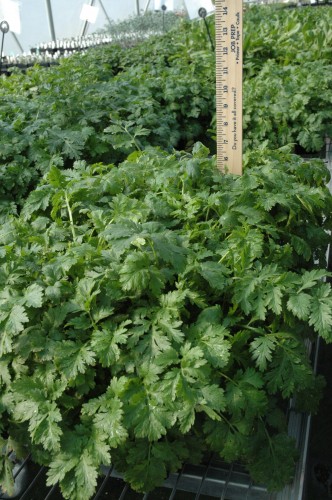
At 5-6″ tall, our Feverfew is full and very strongly rooted! A pretty, daisy-like flowering herb, Feverfew gains its name from its medicinal application as a natural remedy for headaches, fevers, and reducing bruising and swelling. It has also been used to treat depression. Feverfew grows easily in either sun or partial shade and can grow quite large–up to 2 feet tall! This cheerful, health-improving herb is also strongly aromatic and makes a great herb for an aromatic herb garden.
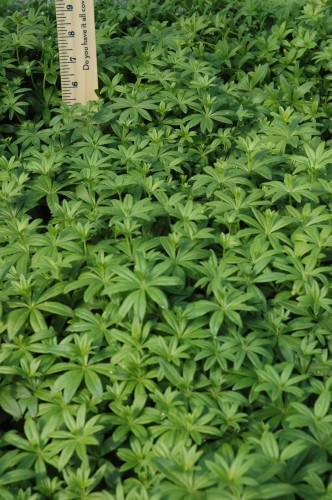
Our Sweet Woodruff is approximately 6 inches high and bursting with beautiful foliage! A wonderfully sweet-scented ground cover, Sweet Woodruff has a perfume of freshly cut hay and vanilla. A great aromatic herb for herb pillows and potpourri because it retains its great scent long after it is dried, it can be placed in drawers and closets to scent your laundry and keep moths away. Medicinally, Sweet Woodruff acts as a natural sedative and digestive aid. For best results, harvest Sweet Woodruff immediately after it blooms for the sweetest, longest lasting fragrance.
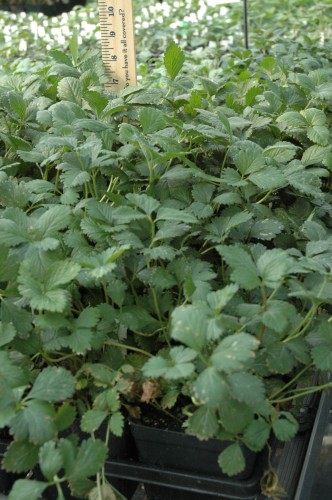
About 7 inches tall with good, healthy foliage. Smaller and sweeter than the garden variety strawberry, Alpine Strawberries are full of vitamins and nutrients. Easy to grow but sometimes hard to germinate because the temperature for the seeds to sprout needs to alternate between cold and hot. One mature, they make a wonderful border or container plant and have medicinal value as a digestive tea and natural dental whitener. Plant lots of these tenacious little plants to reap a bountiful harvest, as the berries are much smaller than varieties found in the grocery store. Order some today, they look full and ready to ship to a garden near you, today!
by Briscoe White | Mar 11, 2011 | Books & Design, Gardening, Growing, Herbs |
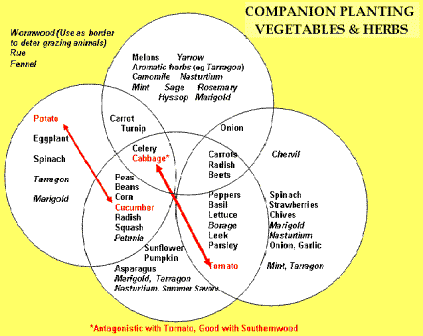
Here at The Growers Exchange, we’re excited to say we have officially started our annual employee vegetable garden! We have started our early spring greens, broccoli, and cabbage, and have added a few herbs to the mix as companion plants.
Broccoli and the entire cabbage family (including cauliflower, kale, kohlrabi, collards, and brussel sprouts) grow wonderfully with aromatic herbs such as dill, chamomile, sage, rosemary, hyssop, and thyme. All members of the cabbage family are heavy feeders, and will greatly benefit from nearby, healthy, herb plants– plants who will double as insect repellents! Although the white cabbage butterfly is not harmful and can help pollinate, its pesky caterpillars are the ones who will chomp away at and destroy your crop. Aromatic herbs will help keep these hungry little guys away.
by Briscoe White | Mar 10, 2011 | Gardening, Growing, Herbs |
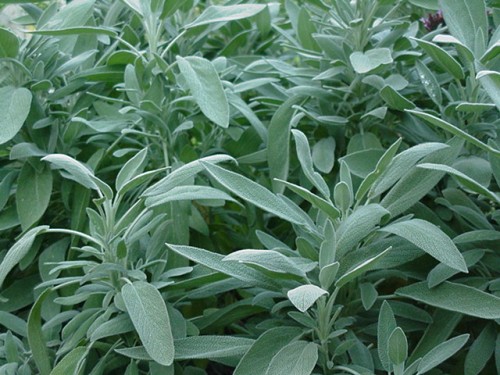
White Sage is one of our most popular perennial herb plants. Native to Southwestern United States, the whitish leaves contain oils and resins that become released when rubbed. Bees love this aromatic herb and its flowers so much, it is sometimes called Bee Sage.
We’ve been thinking about white sage here in the greenhouse for months! One of our slowest-germinating plants, we started sowing these guys all the way back in November. We’ve nursed them all winter, and we are proud to say they are finally ready to graduate to your garden!
White Sage is a water-conserving plant and therefore does not require a lot of water. Water only when dry, and be sure to provide well-drained soil and full sun. The hardiness and low-maintenance of this plant makes it a great player in stabilizing degraded areas.
White sage is pretty easy to prune. Remember that it should grow into a bush, and not a trailing plant. To encourage your plant to grow up, and not out, pruning trailing vines will encourage new, bushier growth.
by Briscoe White | Mar 10, 2011 | Containers, Gardening, Growing, Herbs |
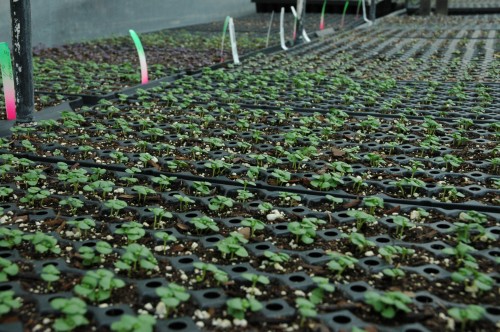
The Stevia plant is native to South America, and has long been grown for its sweet leaves. Stevia extract contains up to 300 times the sweetness of sugar! This beautiful little plant is quickly becoming a popular natural sugar substitute. Although it is sweet, stevia is also known to contain natural insect-repelling properties, bypassed by aphids, grasshoppers, and other harmful pests. (The production of their super sweetness found in the plant’s leaves, is actually a deterrent to insects who can’t stand such an overdose of sugary flavor!)
Stevia is difficult to grow from seed because many places do not carry stevia seeds and it can be difficult to germinate them at home- so let us do all of the hard work for you! Our stevia plants are well-established and ready to be added right to your garden. Stevia is relatively sensitive to cold climates, so be sure any threat of frost has dissipated and soil temperatures are above 50 degrees before you plant outside. Stevia likes well-drained, rich and loamy soils. Add some compost to the top of your beds– the shallow roots will soak the nutrients right up.
Are you a container-gardener? Stevia is quite versitile and will grow great in pots on your porch, balcony, or windowsill as well.

















